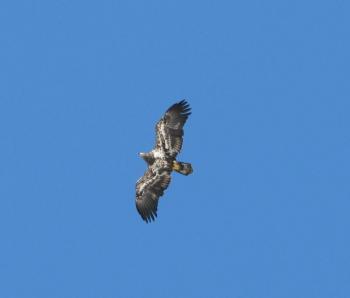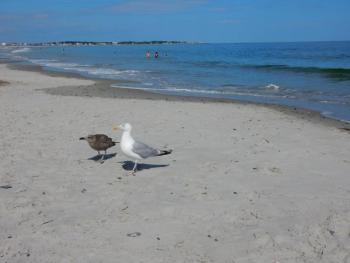“Graduating” in the Bird World
It’s been a memorable graduation season this year for several reasons. Most significant to us is our son’s high school graduation at a ceremony over the weekend. For 2020 graduates everywhere, graduation was a test case in how to keep it meaningful without the traditional graduation pomp and circumstance that marks the occasion and also provides closure and new beginnings. In our case, we sat in our vehicles carefully spaced out in a large parking lot and listened to the principal announcing the graduates over a special car radio frequency. It was certainly memorable, meaningful, and brought us great joy and pride, as this coming-of-age event does for every parent and guardian.
Even before humans had invented the idea of schools and an event to recognize the culmination of an educational goal, there were other types of coming-of-age ceremonies. Anthropologists have documented an incredible array over the years. We remember one carried out by a tropical forest-dwelling Indigenous people group that was sort of equivalent to bungee jumping except that the individual's leap from the tall tower or cliff was with ropes or vines tied around the ankles—no springy bungee to cushion the stop! We are much happier to have our boy just march onto a stage wearing a robe and cap.
Humans may be the only creatures on Earth that have such elaborate social customs to signal when a young person has symbolically reached adulthood, but there are changes in behavior and appearance that mark this important step in other animals. Anyone who has watched nature shows over the years has seen their share of stories of the mother moose, deer, wolf, lion, bear, or some other large mammal forcing its own “teenage” youngster to leave the territory as she prepares to mate or give birth and began raising more young.
Most birds don’t have such a prolonged rearing period as mammals, but many familiar species, including American robins, mourning doves, song sparrows, eastern phoebes, and barn swallows are among species that often raise two sets of young each season. There are a few species that sometimes raise three broods in a single breeding season, or at least try. After one group of young leave the nest, the male may keep feeding them for another week or two while the female begins laying and incubating another clutch. When the next clutch of eggs hatches, both parents will be on duty to find enough food for the helpless chicks. That means that the young birds from the previous nesting will find themselves “graduated” whether they feel ready or not!
In contrast, some of the larger species raise only one or two young per year and the young birds are dependent on their parents for much longer periods. In cranes, for example, the young typically migrate south with their parents sometimes thousands of miles to the wintering grounds. Young herring gulls can often be seen along our coasts in late summer, still following and continually begging for food from what is presumably one of their parents. Young Caspian terns migrate south with the adults, giving their raspy begging calls even as they fly over in migration at night! The “graduation” of these birds may not occur for many months.
In the case of birds like the herring gull, one could say true “graduation” arrives when they reach their fourth year. That’s when they finally molt out of the last of the drab brown feathers that they wear for their first three years of life and into the bold white head and underparts, and gray back, that signifies adulthood and breeding age. Similarly, bald eagles don’t have a bold white head and tail and dark brown body until they are four or five years old.
Some male songbirds attain adult plumage at one year of age and are capable of breeding but have not become accomplished songsters or territory defenders. These birds, often termed “floaters” by ornithologists, sometimes skulk around the edges of the territories of older birds, occasionally singing but trying to stay somewhat inconspicuous so that they are not driven away. These floaters may learn much from this season of extended listening to accomplished singers so that the next year they can “graduate” and become one of the better songsters and hold their own territory.
As a bald eagle soared overhead soon after our son’s graduation ceremony, we wondered how long it had been since that particular individual had “graduated.” Impossible to know by observing, since, unlike our son, who hurriedly removed his ceremonial attire as soon as possible, the eagle will wear its “cap and gown” for the rest of its life!
Jeffrey V. Wells, Ph.D., is a Fellow of the Cornell Lab of Ornithology and Vice President of Boreal Conservation for the National Audubon Society. Dr. Wells is one of the nation's leading bird experts and conservation biologists and author of “Birder’s Conservation Handbook”. His grandfather, the late John Chase, was a columnist for the Boothbay Register for many years. Allison Childs Wells, formerly of the Cornell Lab of Ornithology, is a senior director at the Natural Resources Council of Maine, a nonprofit membership organization working statewide to protect the nature of Maine. Both are widely published natural history writers and are the authors of the book, “Maine’s Favorite Birds” and “Birds of Aruba, Bonaire, and Curaçao: A Site and Field Guide” from Cornell Press.



























